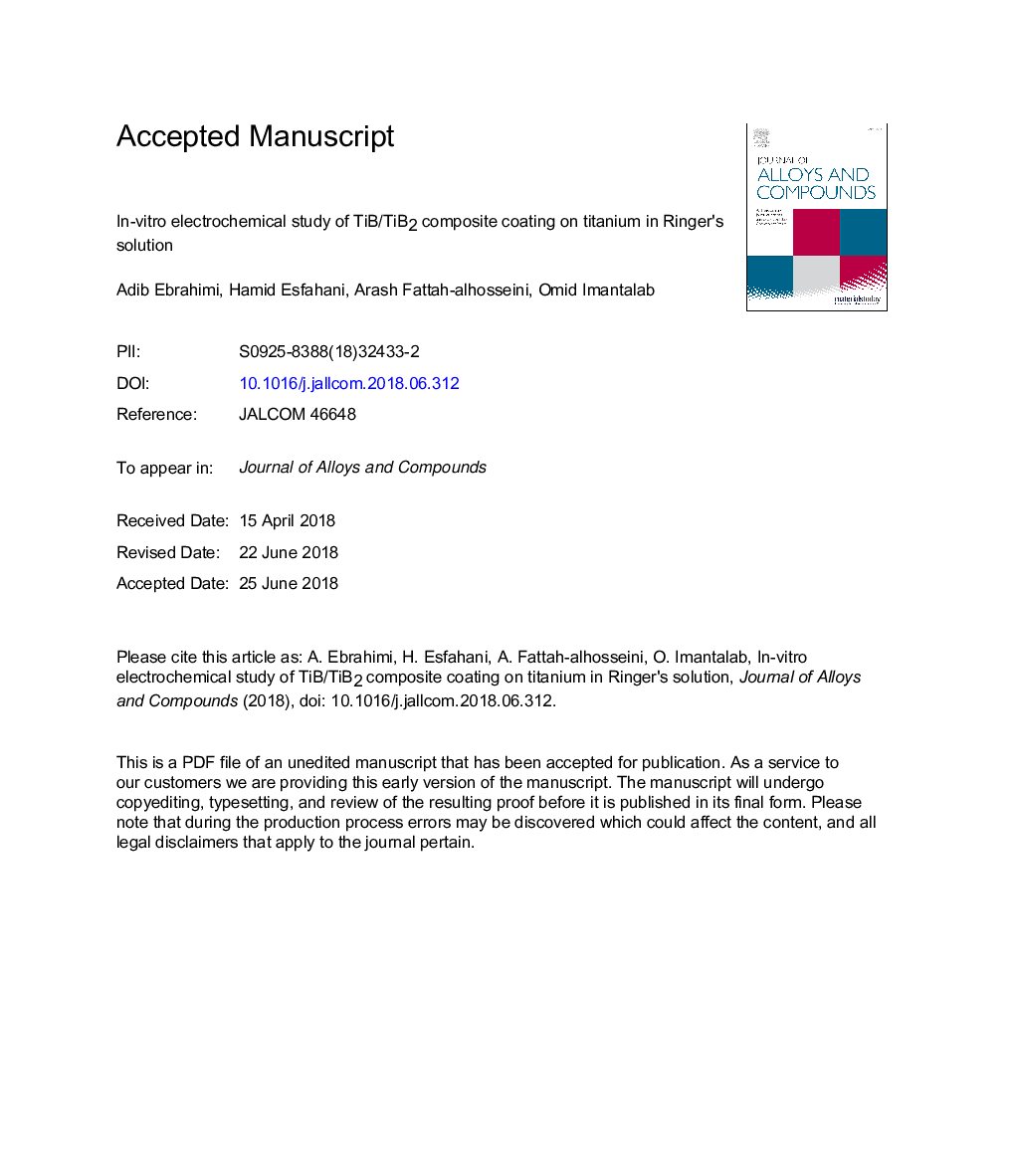| Article ID | Journal | Published Year | Pages | File Type |
|---|---|---|---|---|
| 7990599 | Journal of Alloys and Compounds | 2018 | 34 Pages |
Abstract
In this work, different electrochemical analyses in Ringer's solution at 37â¯Â°C were implemented to understand the electrochemical response of diversity of titanium boride coatings developed on the commercially pure titanium (CP-Ti) via pack cementation method. X-ray diffraction (XRD) patterns and scanning electron microscopy (SEM) images indicated that the boriding creates the TiB whiskers and TiB whiskers/TiB2 dense layer on the top of the surface of CP-Ti in respect to the heat-treatment at 900 and 1000â¯Â°C for 3â¯h. Potentiodynamic polarization curves cleared the passive behavior of the borided samples. Electrochemical impedance spectroscopy (EIS) assays revealed the satisfactory corrosion resistance of the borided samples in Ringer's solution. Mott-Schottky (M-S) assessments represented that the passive films formed on CP-Ti and the borided samples behaved as doped n-type semiconductor properties. Furthermore, M-S assessments indicated that the donor concentration of the passive films decreased with increasing the time. Finally, the borided sample at 900â¯Â°C in comparison with the borided sample at 1000â¯Â°C illustrated to be the more suitable selection for bioimplant applications, mainly due to better surface conditions to form a less defective and more protective passive film.
Related Topics
Physical Sciences and Engineering
Materials Science
Metals and Alloys
Authors
Adib Ebrahimi, Hamid Esfahani, Arash Fattah-alhosseini, Omid Imantalab,
